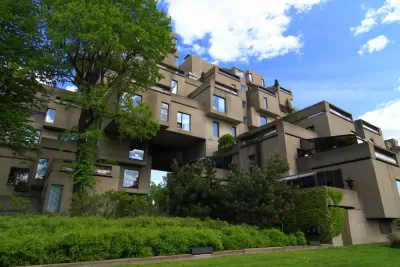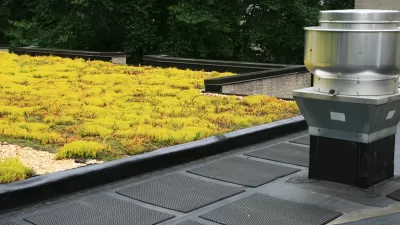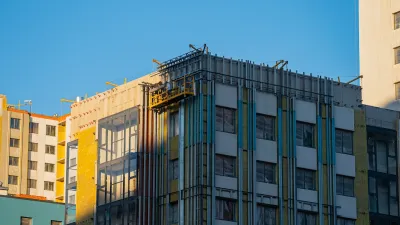There is plenty of evidence for modular construction as a key component of a green economy.

Modular buildings are partly assembled in factories to strict specifications, then brought to their permanent sites.
At that point, the buildings may already be fully put together or they’ll get finished on-site with cranes that stack one piece on top of another until the project’s completion.
There are several reasons why modular buildings help city planners and similar professionals green the footprint of the built environment. By thinking about long-term environmental sustainability as well as eco-friendly benefits, modular building construction sites are the clear choice for the future.
They Carbon Emissions Through Shorter Project Times
Environmentally-minded construction companies are always looking for ways to reduce emissions. In England, statistics say that the energy and fuel usage on building sites accounts for 33 percent of total emissions [pdf] in the construction sector.
However, the use of modular buildings could help reduce that percentage. That’s because it’s possible to build them in substantially less time than conventional structures, reducing the adverse environmental effects of the construction site itself.
For example, the construction time needed for a 135-bed hospital in Kingston upon Thames, London, was initially 35 weeks. However, the use of a modular process reduced the time of completion to just 19 weeks.
They Contain Eco-Friendly Components
One of the greatest advantages of modular buildings is the ability to order them with a full assortment of building materials and other features that are kind to the planet.
In one case study, a contractor at a United States Air Force base was hired to renovate the establishment’s facilities during a five-year agreement. The company needed a temporary place to house its employees for that time and wanted a modular building made with sustainability in mind [pdf].
The result was a 2,160-square-foot structure with a reflective white covering on the roof for better energy efficiency. Additionally, the construction company used recycled materials for the floor coverings and insulation.
However, it didn’t stop there. The builders also enhanced the modular building with LED light fixtures and plumbing in the restrooms designed to reduce waste. Both of those additions had sensors on them, ensuring they only activated when necessary.
They Help Companies Steer Clear of Wastefulness
Modular buildings can be good for the planet in another way—by equipping companies to avoid the unnecessary waste that can often accompany hastily planned upgrades.
A company called SnapCab offers standalone office spaces that can enhance an existing, non-modular structure by providing private areas in open office environments.
Instead of making companies go through the costly process of making permanent changes to their internal layouts, SnapCab Pods balance changing needs quickly and effectively without updates which could compromise productivity or result in going over budget.
It’s possible to move the Pods to another part of the building if needed, too. This reusability is another factor that’s good for the environment.
They Open Up More Opportunities for Green Construction Jobs
As stated in the 2015 Green Building Economic Impact Study carried out by Booz Allen Hamilton, the green construction sector will create 1.1 million jobs by the end of 2018. Also, LEED-based construction projects will account for 386,000 of them.
According to the full report, LEED residential projects are forecasted at a higher-than-usual year-over-year (YoY) growth rate of 31.1 percent from 2015 to 2018, indicating growing interest from homeowners and builders. The expected YoY growth rate for LEED commercial projects for that same period is 8.5 percent, suggesting steady growth compared to past projections.
Data for homes built in the United States shows more than 388,000 are LEED registered or certified as of December 2017, with most achieving Gold certification. This confirms the belief that residential projects will play a role in LEED-motivated job creation and other economic benefits.
On the other hand, it’s also worth keeping commercial LEED projects in mind. Information from October 2017 indicates there are more than 92,000 of them completed.
The average estimated direct impact on a state’s GDP from LEED construction is an increase of $214 million in 2018. California, Illinois and Nevada are among the largest contributors to such economic benefits. Other states have also built impressive and frequently used LEED buildings.
At North Carolina’s Appalachian State University, builders constructed Mountaineer Hall, a student dormitory, faster than traditional methods alone by using modular construction when applicable. The project got LEED Gold certification shortly after its completion in early 2012.
In addition, that dormitory was finished nine months before [pdf] another student housing project built with non-modular construction. Not only did the traditionally constructed project take longer but it also had over 100 fewer beds.
Because the Mountaineer Hall project was so successful, it serves as a prime example for cities that are considering exploring green construction methods but still feel unsure about committing to the concept. It also demonstrates how modular buildings can complement an urban planner’s intentions to earn LEED certification for an upcoming project.
Due to these factors, modular buildings provide new opportunities for people interested in greening the footprint of the construction process, as well as the impacts of operating and maintaining the building after it's complete. As more projects deliver positive environmental outcomes for the construction companies involved, modular construction will continue to grow appeal.

Florida Considers Legalizing ADUs
Current state law allows — but doesn’t require — cities to permit accessory dwelling units in single-family residential neighborhoods.

Manufactured Crisis: Losing the Nation’s Largest Source of Unsubsidized Affordable Housing
Manufactured housing communities have long been an affordable housing option for millions of people living in the U.S., but that affordability is disappearing rapidly. How did we get here?

Research Shows More Roads = More Driving
A national study shows, once again, that increasing road supply induces additional vehicle travel, particularly over the long run.

EV Chargers Now Outnumber Gas Pumps by Nearly 50% in California
Fast chargers still lag behind amidst rapid growth.

Affordable Housing Renovations Halt Mid-Air Amidst DOGE Clawbacks
HUD may rescind over a billion dollars earmarked for green building upgrades.

Has Anyone at USDOT Read Donald Shoup?
USDOT employees, who are required to go back to the office, will receive free parking at the agency’s D.C. offices — flying in the face of a growing research body that calls for pricing parking at its real value.
Urban Design for Planners 1: Software Tools
This six-course series explores essential urban design concepts using open source software and equips planners with the tools they need to participate fully in the urban design process.
Planning for Universal Design
Learn the tools for implementing Universal Design in planning regulations.
City of Moreno Valley
Institute for Housing and Urban Development Studies (IHS)
City of Grandview
Harvard GSD Executive Education
NYU Wagner Graduate School of Public Service
City of Cambridge, Maryland
Newport County Development Council: Connect Greater Newport






























